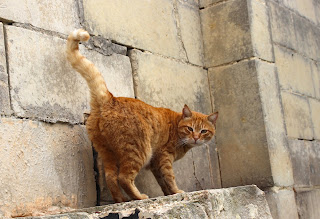» read newsletter online » newsletter auf Deutsch
'Islands of Cats' out now ! E-Book on Lulu.com for €7.99 (excl. VAT)
We are proud to announce the release of 'Islands of Cats' - in English, German, or Maltese.
'Islands of Cats' portrays a representative 22 of 1,000+ Stray Cat Carers and shelters in Malta and Gozo, outlines places of interests in the wider area of the cat colonies, contains interviews, cat facts and much more. An entertaining, informative and educational publication with the purpose to create more awareness of the important work of Stray Cat Carers and their feline protégés in the Maltese Islands.
The ebook comes as fixed-layout PDF, with 222 high-resolution colour photographs on 121 pages, readable on any device with a pdf-reader: desktop, notebook, tablet, and smartphone.
From each book sold, we will return 1 Euro to the community of Stray Cat Carers. We are currently evaluating cat food vouchers and/or vouchers for spaying and neutering.
Help us to help the stray cats carers
We are still looking for start-up support for the printing of the first 1000 hardcovers of 'Islands of Cats'. Your purchase is well invested, als all income from the ebook brings us closer to our goal. » click here for more...
Please share the news with your friends and family, and like us on Facebook, follow us on Twitter, and visit our blog. Thank you so much for your time and consideration.
Kind regards
Alexander Johnson
Gabriele Ruttloff-Bauer
» read newsletter online » newsletter auf Deutsch























